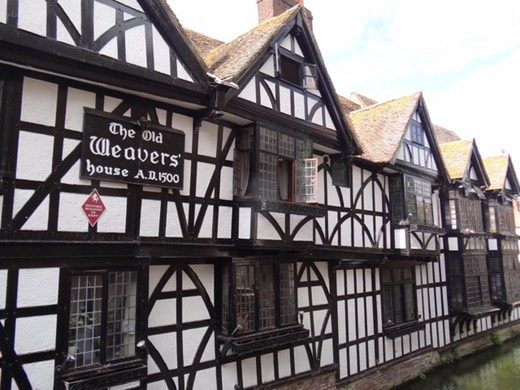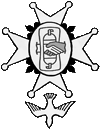“Profitable & gentle strangers ought to be welcomed & not grudged at”
Matthew Parker, Archbishop of Canterbury, 1559-75 (son of a Norwich weaver)
1561 a community gathered in Sandwich
1567-8 another community began in Canterbury
Numbers fluctuated but, at times, they amounted to between one half & one third of the entire city population. They were entirely self-sufficient & appointed some of their own community to control morals & behaviour. Relations with the indigenous population were usually very good. It is worth mentioning that the several riots in Canterbury's streets between the Benedictine monks & supporters of St Augustine's Abbey & Christchurch Cathedral Priory were never emulated.
Though City regulations restricted their commercial life, the refugees practised a wide variety of occupations – essential to any independent community.
The largest number were weavers & those who prepared the wool for weaving, The cloth was sealed by the City authorities (at the cost of a few pence per piece) & marketed wholesale to the City's native Freemen . Various materials were produced & new names were invented periodically to help sales. The records mention many names, some unrecognisable to-day – arras, baies or bayes, (baize ?) bombazine, bourrois, cafas, Canterbury muslins, chambetts, combazines, cotton, damask, diaper, frotz, mauntes, passementerie (fringes, braid, ribbons & laces) rashes, (not, as you might think, a rough-textured cloth, but silk woven with wool) sackcloth, saies or sayes, (serge) Florence serges, Orleans serges, silk mouquade, stammets, taffeta, tapestry, tiffanies silk, worsted (& its variants). One name with an obvious marketing slant is “perpetuance.”
Woollen cloth predominated in the Walloon years; silk became more common in the Huguenot period.
In 1583-93 there were around 800 looms in Canterbury. After a decline, (for demographic & commercial reasons), numbers rose again as more refugees flooded in & by 1685 there were over 1,000 A decade later there were only about 200 left. (Complainants blamed cheap imports from abroad, especially Asia, which were then banned by Act of Parliament)
By 1710, the number had risen to 334, run by 58 master weavers., but in 1786 they had fallen again to 200. John Callaway Master of the City Silk Weavers, then reinvigorated the industry for a while by his invention of Canterbury muslins. Reversing the silk weavers' customary opposition to woven cotton, he began to weave silk with Richard Arkwright's cotton twist. After years of prosperity, fashions changed again & by 1800 only 10 weavers remained. By 1837 there were none.
-Around 1896 Miss C F Philpotts & Miss K Holmes established a weaving school on the second floor of 39 High Street – one of the few in the main thoroughfare appropriately capped with a Flemish gable -now occupied by “Pizza Hut”. “Women & girls from amongst the poor of the city, who had need of employment were taken in.” Perhaps the first floor window was enlarged to its present size to provide extra light for the weavers.
The establishment thrived & by 1899 had removed to John Callaway's old building beside the King's bridge, hence its name to-day – “The Weavers”

Records indicate its use for weaving in 16th century; beneath the floor boards were found fragments of silk looms, pieces of raw silk, wool & bobbins.
Eventually 30 weavers were employed, working 28 looms. The establishment closed in 1914.
Other products particularly associated with refugees were armour, bricks, tiles, & Flanders pots.
In Faversham (with two Conformist French churches) they made gunpowder.
Near Maidstone (a Dutch church stood beside to-day's Museum gardens) they made white & brown paper.
Some cordwainer refugees produced “Spanish” leather; interesting name for Walloon refugees to use in the circumstances.
They were renowned for horticulture. It is sometimes said that they introduced celery to Kent as well as carrots, sugar beet & various forms of cabbage including cauliflower and Brussels sprouts.
Our Kentish hops originated in Flanders though they crossed our shores rather earlier than the refugees.
Finally we should remember the Flemish gables which adorn so many farmhouses & cottages – a distinctive architectural feature of our county.
© Michael H Peters 2007
